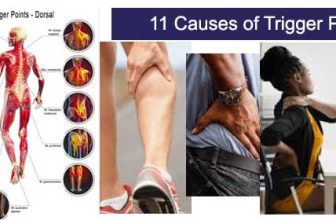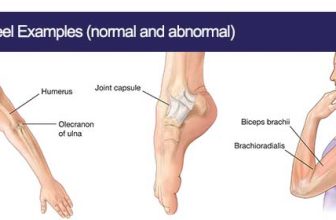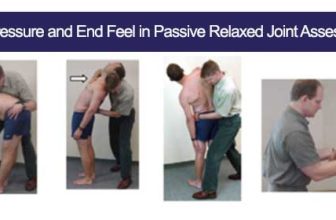
Trigger points are hyperirritable spots in skeletal muscle that are associated with palpable nodules in taut bands of skeletal muscle fibers or its fascia. Trigger points are point tender on site, often exhibit a predictable pain referral pattern, and cause shortening of the affected muscle.
They are often the source of chronic pain and discomfort and can have a significant impact on muscle function and overall well-being. Understanding trigger points is essential for massage therapists to effectively treat muscle pain and dysfunction.
8 Characteristics of Trigger Points
- Palpable Nodules:
- Trigger points are often felt as small, hard nodules or knots within the muscle tissue.
- Tightness:
- The muscle tissue around a trigger point is often tight and contracted.
- Pain:
- Referred Pain: Trigger points can cause pain in areas distant from the actual site of the trigger point. This referred pain pattern is often consistent and reproducible.
- Local Pain: Trigger points can cause pain locally (at the site of the trigger point). Trigger points may be tender to the touch, and applying pressure to them can cause pain.
- Local Twitch Response:
- Palpation of a trigger point can sometimes cause a visible or palpable twitch response in the muscle, indicating the presence of the trigger point.
- Jump Sign:
- a reflexive response where a patient reacts by flinching, jumping, or expressing a verbal outburst (e.g., a gasp or shout) when a trigger point is palpated or pressed.
- Reduced Range of Motion:
- Muscles with active trigger points often exhibit decreased flexibility and range of motion due to pain and tightness.
- Weakness:
- Trigger points can lead to muscle weakness, as the affected muscle cannot contract or function properly.
- Autonomic Phenomena:
- Trigger points can also cause autonomic phenomena, such as sweating, dizziness, or nausea.
4 Types of Trigger Points
- Active Trigger Points:
- These are points that cause pain at rest or with movement. The pain is often referred and can be quite intense.
- Latent Trigger Points:
- These do not cause pain unless they are compressed, but they can restrict movement and weaken the muscle.
- Primary Trigger Points:
- These are the initial points of pain and dysfunction within a muscle.
- Secondary Trigger Points:
- These develop in response to primary trigger points, often due to muscle compensation patterns.



